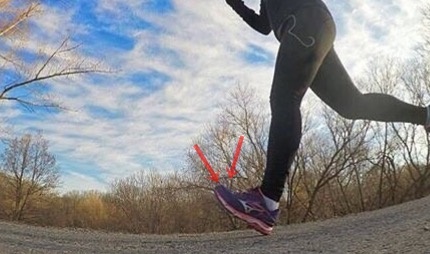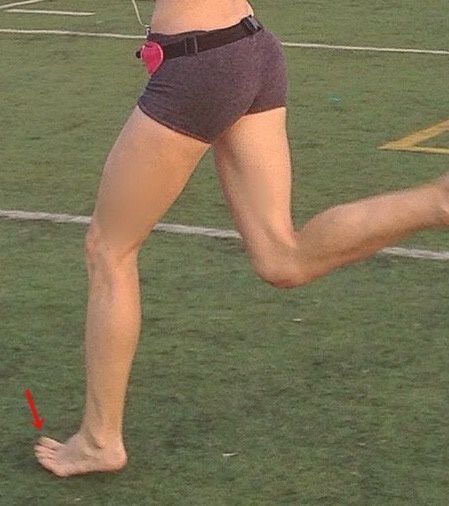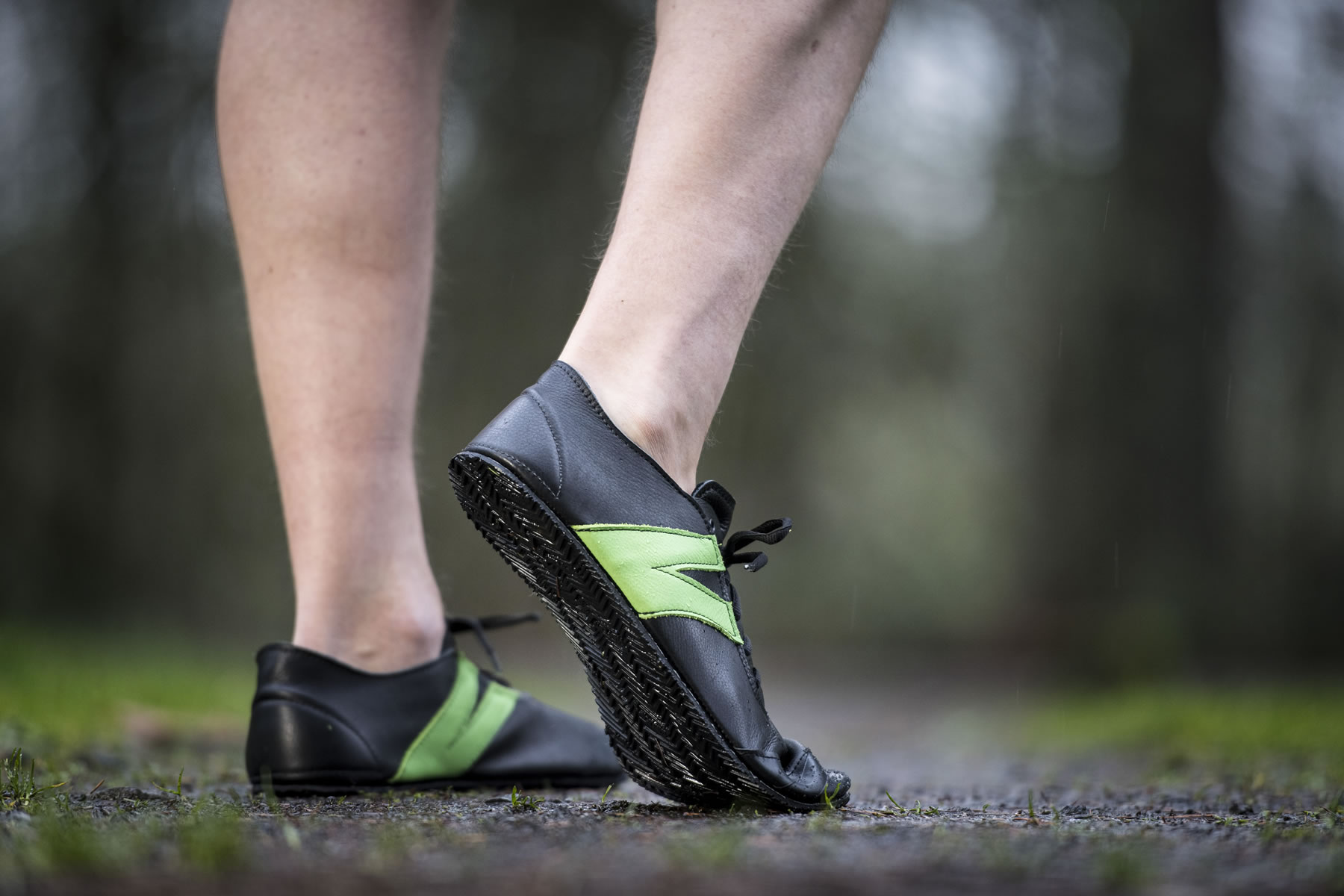Heel striking when running is a big contributor to Achilles injury because the mechanical elements of landing heel-first was found to be pain and injury-predisposing on the tendon as compared with forefoot running. Here was the confirmation:
In order to land heel-first, the front of your foot (forefoot) must lift up (dorsiflexion), shown below:


A study in the journal, Research in Sports Medicine, noticed that all runners with an Achilles injury lifted their forefoot back upon and at touchdown. This is in accordance to other assessments in that a study in The American Journal Sports Medicine, reported that the greater the dorsiflexion (forefoot lifting) at landing when running, the greater the excursion of the foot, meaning the foot pushed away from its neutral line which increased strain and mechanical load on the gastrocnemius and Achilles tendon.
Why Forefoot Running is Better for the Achilles
Of significance, it’s been well-reported that the mechanical properties of forefoot running is a natural stabilizing reinforcer on the foot. This is largely responsible for helping improve the odds of avoiding Achilles pain and injury since the foot moves around less which cancels out higher levels of stress and strain on the tendon. Here are the main reasons for this:
For one, the forefoot doesn’t lift up (no dorsiflexion) at landing, rather the forefoot points down towards the ground, allowing the forefoot to strike the ground before the heel, shown below:

For another, the foot spends a shorter amount of time on the ground in forefoot running, thereby preventing wasted movement of the foot which greatly unstresses the Achilles. Not to mention, there are less all-around force components acting across the Achilles in forefoot running than heel strike running!
The Take Home Message
The foot is less capable of maintaining postural stability in heel strike running, which is the leading cause of Achilles injury, and is ultimately, a revealing indicator that foot strike pattern really does matter in running. This is why forefoot striking is the better answer to avoiding Achilles injury because the foot does not alter from its neutral trajectory since the foot is more stable at pinning down, and there’s less net forces, too, thereby allowing you to be on the safer side of running.
The final piece of good news is here’s more detailed evidence telling us why the Achilles is significant less prone to injury with forefoot running than heel striking:
Forefoot Running Improves the Elastic Properties of the Achilles Tendon
Forefoot Running Reduced Achilles Injury By Reducing Heel-Whipping
Forefoot Running Reduces Brake Loads and Compressive Forces on the Achilles
More From Run Forefoot:
- Barefoot Running
- Minimalist Running
- The Dangers of the Standard Running Shoe
- Examples of Forefoot Running Shoes
- Energy Supplements for Long Distance Runners
References:
Donoghue et al. Lower limb kinematics of subjects with chronic Achilles tendon injury during running. Res Sports Med, 2008;16:23-38.
Mahieu et al. Intrinsic risk factors for the development of achilles tendon overuse injury. Am J Sports Med, 2006; 34(2):226-234
If you’d like, you can support Run Forefoot and help keep it going by making a donation in any amount of your choosing:

Or, you can also support Run Forefoot by shopping at the following top minimalist shoes brands, and be sure to bookmark the links:
Be Lenka: https://www.dpbolvw.net/click-7600968-14330828
Xero Shoes: https://xeroshoes.com/go/Run_Forefoot
Iguaneye: https://www.iguaneye.com/?ref=8tfXVc92
Soft Star Shoes: https://shrsl.com/3mp1b
Wilding Shoes: https://bit.ly/3lIygQP
Vivobarefoot: https://shrsl.com/3kvih
Zappos: https://goo.gl/J1CeAd
Bretta Riches
BSc Neurobiology; MSc Biomechanics candidate, ultra minimalist runner & founder of RunForefoot. I was a heel striker, always injured. I was inspired by the great Tirunesh Dibaba to try forefoot running. Now, I'm injury free. This is why I launched Run Forefoot, to advocate the health & performance benefits of forefoot running and to raise awareness on the dangers of heel striking, because the world needs to know.
Latest posts by Bretta Riches (see all)
- Can You Run In Barefoot Shoes? Yes, But DON’T Heel Strike! - 21/07/2024
- Why Cushioned Running Shoes Are Really Bad for Your Feet - 19/07/2024
- Do Cushioned Running Shoes Cause Injuries? - 17/07/2024


This is incredible! Where do you discover this stuff?